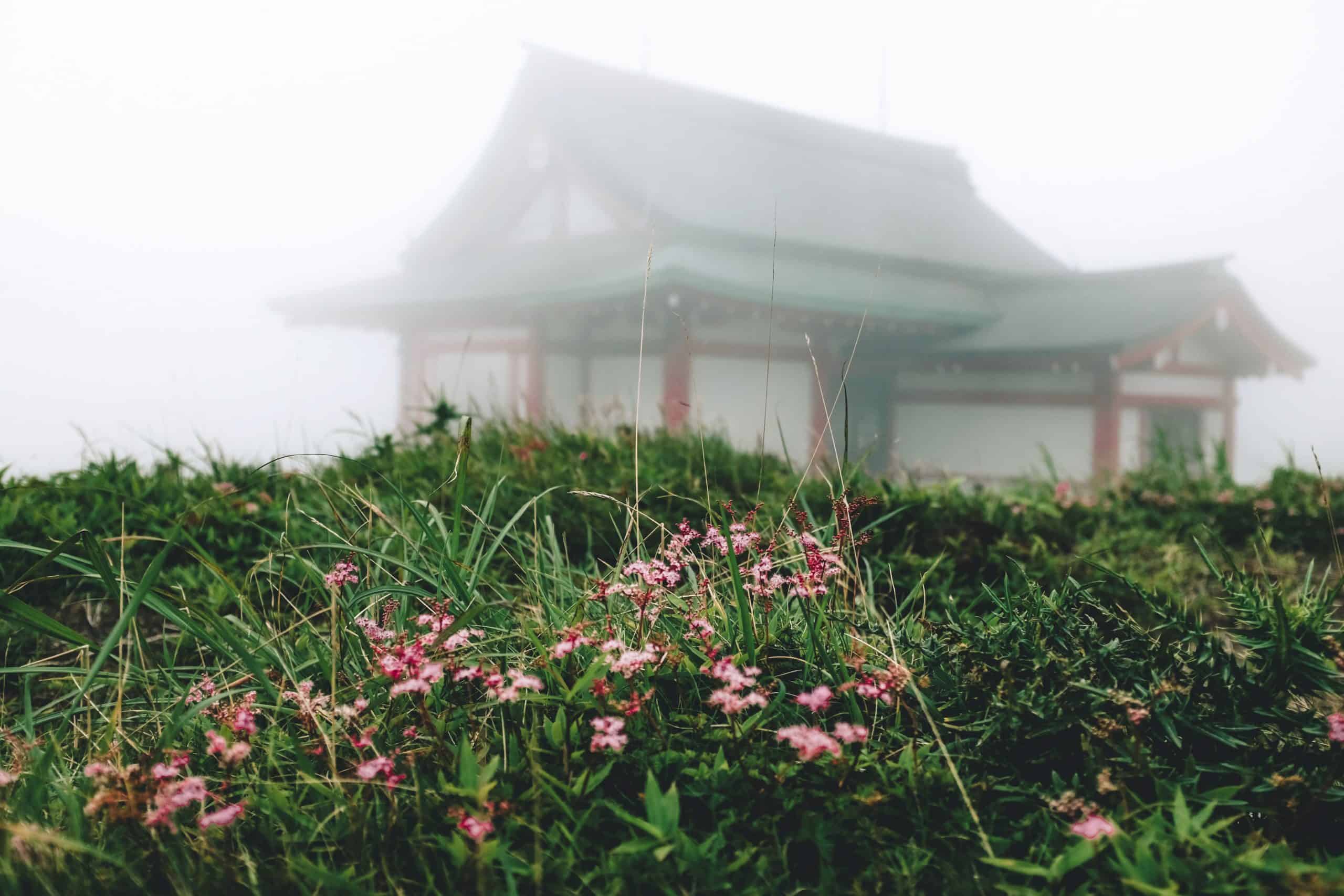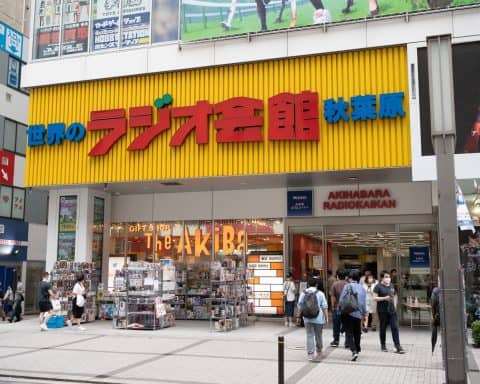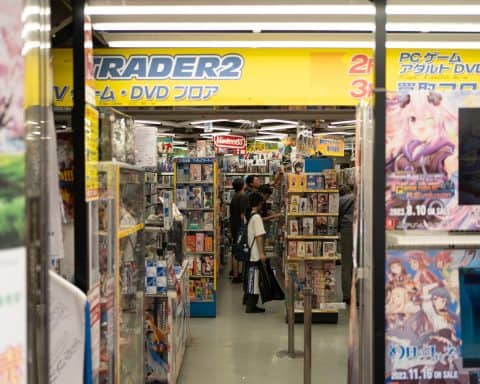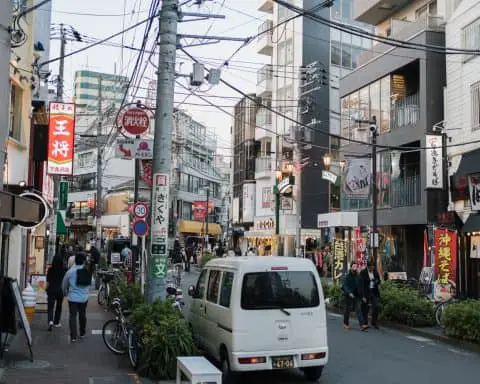This is one of those articles I’ve been waiting to write for a long time. I get to help people decide between two of my favorite places in Japan! Both areas you may consider on your trip to Japan, but out of Hakone vs Kyoto, which should you visit?
If you find yourself near both Tokyo and Osaka during your holiday, and you’ve got the time and money, you should visit both. However, if you’re looking to soak in a hot spring, or escape to the mountains, go for Hakone. If, on the other hand, you’re looking for a quintessentially Japanese destination filled with things to do that is a lot more relaxed than a big city (but still with a buzz!), Kyoto is the place for you.
Of course, this decision relies on a number of different factors which is why it’s probably best to read this article before you make your final choice. Or, just skip the article and visit both if you can!
Strap yourselves in, this is going to be a long one!
Why should you trust me?
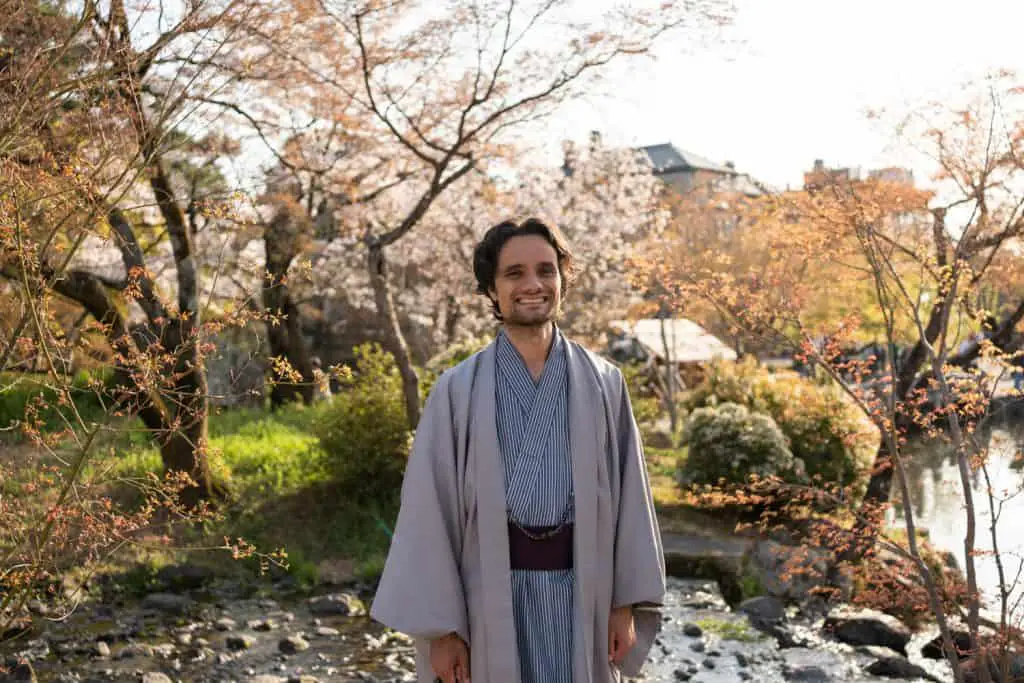
So, you’ve just booked your incredibly cheap flight to Japan, and are now hard at work planning your trip to Japan. You find yourself on this website and start to wonder, “Who the hell is this guy, and why should I trust him?” Well, let me tell you! 😉
I live and breathe Japan, and uprooted my life to live here in 2022. I spend my days creating content and helping hundreds of thousands of people each year to plan their dream trips to the land of the rising sun.
In terms of the two places in this article, I’ve been to both of them. Kyoto 3 times, and Hakone once. I would have been to Hakone more, but our Airbnb canceled 12 hours before and derailed our trip (that’s why I use this company now).
Though that trip got canceled, I still did a spectacular amount of research for it and know pretty much everything there is to know about Hakone. So, you’ll still get the information, just with fewer (and slightly older) photos!
This is my personal experience of both of these locations in Japan and my honest opinion on which one you should choose. Let’s get into it!
Location and Accessibility
Throughout this article, you’ll come to realize that Hakone and Kyoto are similar in a number of ways. However, when it comes to their location, they almost couldn’t be further apart.
If you get the Shinkansen from one place to the other, it’ll take you around 2 hours and 40 minutes. Driving, you’re looking at just under 5 hours. So there’s a bit of distance!
I imagine you searched this topic of Hakone vs Kyoto either before you’ve fully planned your trip (and are figuring out where things fit in), or you’re already in Japan and have a bit of wiggle room in your schedule. Either way, location is likely to play a big role in which one you chose.
Location of Hakone
As you can see from the map above, Hakone is pretty close to Tokyo. Depending on the train you get from Shinjuku, you can expect the journey to take around 70-80 minutes.
Whilst you are able to just get a regular train from Shinjuku to Hakone-Yumoto, most people opt to take the Romancecar. It takes a scenic route, is far more comfortable, and is the perfect way to start your trip to Hakone.
As a side note, if you’ve got the time then I’d recommend popping up to Oshino Hakkai. It’s really close to Hakone and one of the cutest traditional places I’ve been to so far. Plus, it’s a little off the beaten track which is always nice!
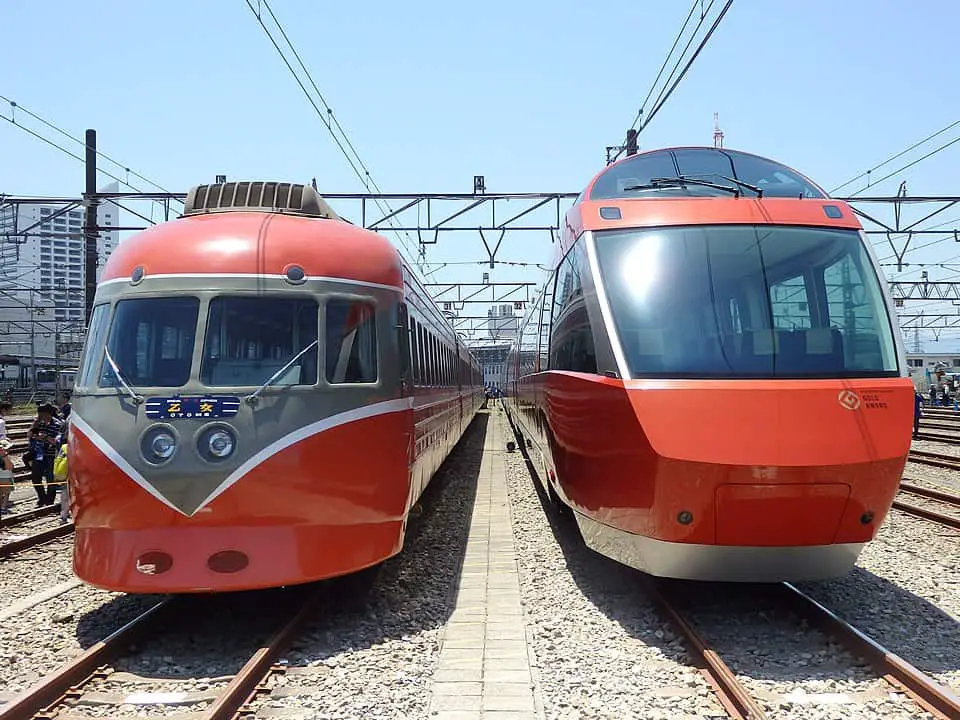
You can book the romance car online up to a month in advance for just ¥2,470 ($18.30) which includes the regular ticket. Basically, you’re paying for the privilege to go on one of these cool trains, but you also need a regular ticket to tap in and out of the train station. IC cards work fine for this part of the trip.
I would absolutely recommend booking as early as possible, especially in peak seasons. I tried so hard to get to the front of the train (seats literally at the very front of the train) but they sold out within the first 5 seconds (not even joking).
Splurge the money on these cars because they’re absolutely worth it!
Location of Kyoto
Kyoto on the other hand is much closer to a lot of things, so you’ll probably have a lot more options on how to get there, depending on where you’re coming from. It’s also a prefecture, not just an area like Hakone is, so it’s much bigger too.
You could easily take a day trip from Osaka, or perhaps even from Hiroshima after you’ve finished this 2-day itinerary.

The biggest reason why Kyoto is easier to get to is because of its station. Hakone does have a station, it’s much smaller. The closest ‘hub’, or place you can grab the shinkansen is down in Odawara, and we’ll talk a little bit later in the article about why Odawara could be a great place to stay in as well.
Whether it’s important to you to have easy access to the rest of Japan on your doorstep is down to you, but in terms of accessibility, Kyoto edges ahead. But, Hakone isn’t far behind at all.
Things to do
Things to do in Hakone
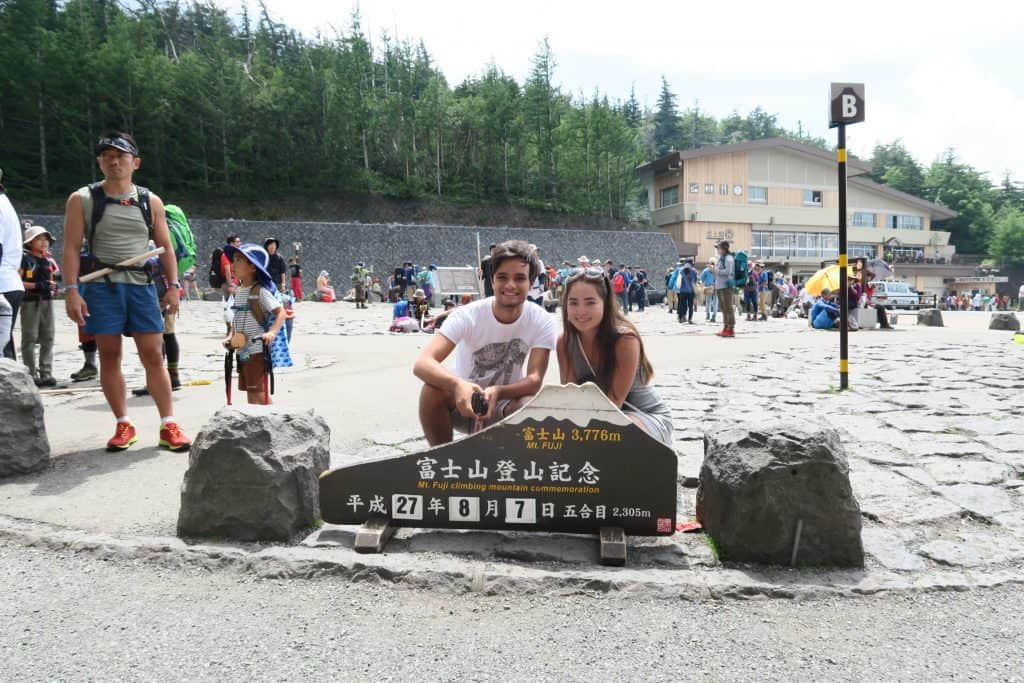
Hakone is a very mountainous area. It’s the perfect place to go if you’re looking for a retreat from the hustle and bustle of Tokyo, or simply looking to reconnect with nature.
And not one of those ‘retreats’ you see in every other blog post that just ends up being a park, this is the real deal, and you’ll literally feel like you’re in the middle of nowhere.
Being out in nature is the main pull of Hakone. That, and the hot spring accommodations we’ll talk about in a minute.
Other than a load of walking trails that I’d highly recommend, there are a couple of other things you may want to visit in the area.
Hakone open-air museum
Hakone’s open-air museum was established in 1969 and is known for its spectacular collection of contemporary art, including sculptures, installations, and other outdoor artworks. It’s spread across 70,000 square meters and features more than 120 sculptures and installations created by artists from around the world.
One of the most popular exhibits is the Symphonic Sculpture, a massive steel structure created by Gabriel Loire. This was one of the main reasons I wanted to come here, it’s honestly hard to put into words just how cool this room looks!
Hakone Tozan Railway
The oldest mountain railway in Japan, and perhaps the coolest. Hakone Tozan Railway is a cable car (train) that connects Hakone-Yumoto and Gora station, and my word does it look like a beautiful journey.
Once again, apologies for the lack of photos, I’m planning to visit again later in 2023 to get some!
Hakone Ropeway
The Ropeway is the most popular attraction in Hakone, and with such incredible views over Owakudani it’s not hard to see why. If you end up going on a clear day, you should be able to see Mount Fuji!
Hakone Kowakien Yunessun
I’ve wanted to go to Kowakien Yunessun for almost the same amount of time since I knew Japan existed. I still haven’t managed to make that dream a reality (damn you, Airbnb!), but if you think ‘theme park’ and ‘onsen’ go together, you should absolutely check this place out!
Lake Ashi

Commonly referred to as ‘Hakone Lake’, Lake Ashi is basically a giant crater at the bottom of the ropeway. I’ve been here and we took a trip on the pirate ship above, super cool and highly recommended!
Mototsumiya Shrine
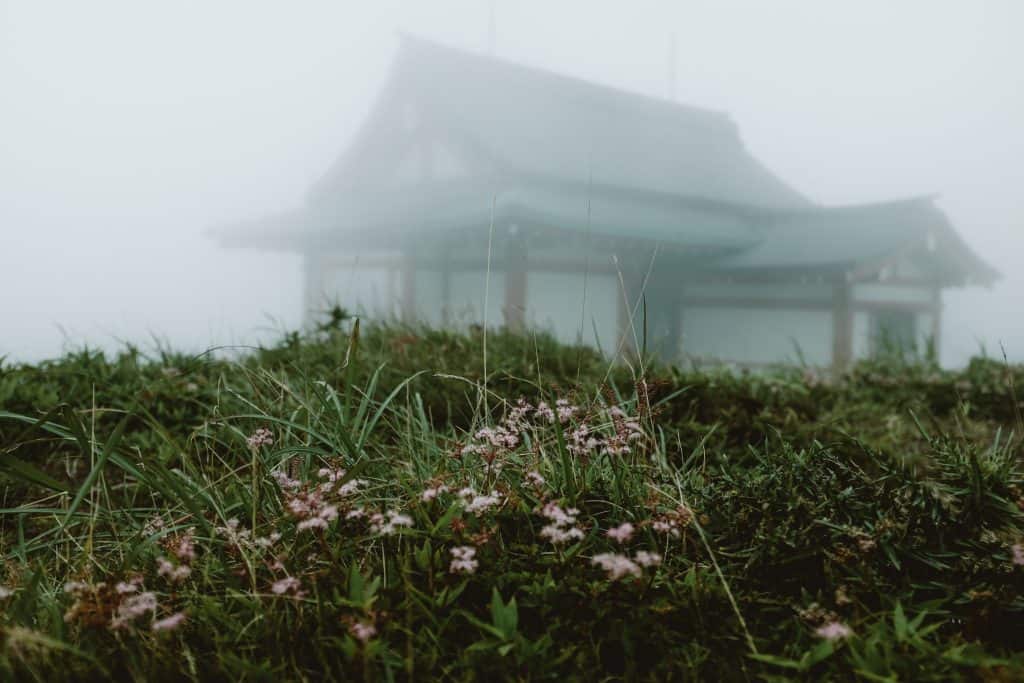
This was the other place we went while visiting Hakone, and apart from the cloudy weather, it was a really beautiful place (which also had a cable car to get up to). This has always been one of my favorite photos I’ve take in Japan, though I don’t think much of my younger selfs editing skills!
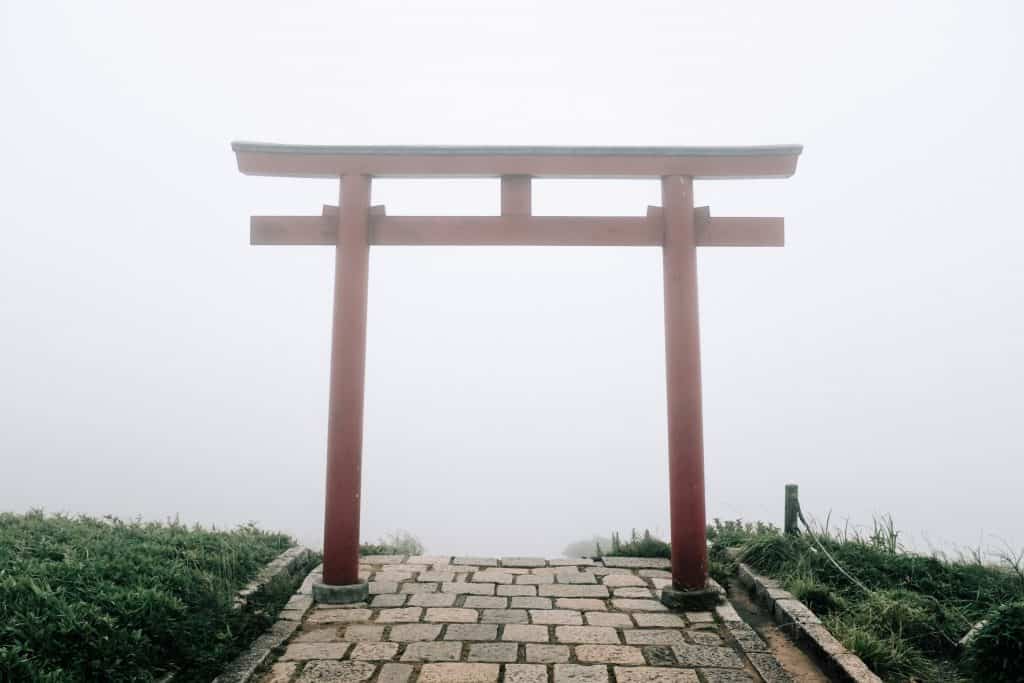
There’s something incredibly mystical about visiting a shrine in the clouds like this. In the same way that visiting Nikko temple in the rain also seems a bit special. I’ll post an article about that soon, I promise!

Whilst I’m sure the views are pretty incredible when the clouds go away (I’m told you can see Fuji from here), it clearly didn’t stop me from chasing butterflies and enjoying myself!
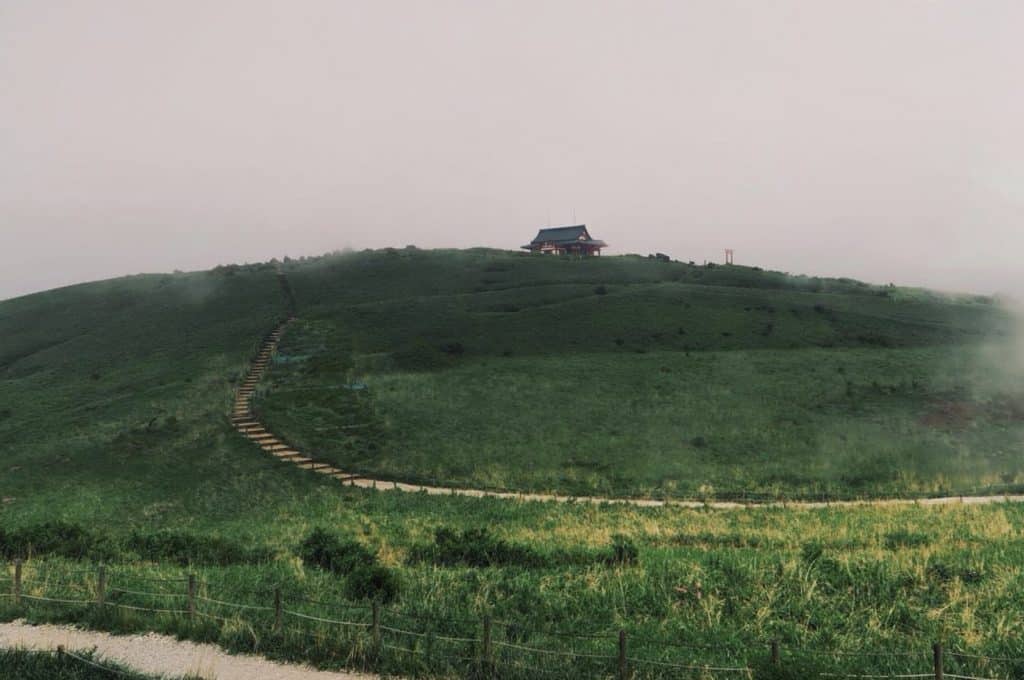
As you can see from the photo of me at the top of this section, Hakone is also very close to Mount Fuji, so if you’ve got some time to spare you might as well head over (even just to the 5th station like me!)
Things to do in Kyoto
Kyoto is a city that never ceases to amaze me, and exploring its backstreets is a fantastic way to experience it. It still has a number of places to escape to in nature, just as Hakone does, but it can get a lot busier depending on when you visit.
While it’s certainly a far cry from somewhere like Tokyo, it’s still got a buzz to it.
In terms of things to do in Kyoto, there are lots. Far more temples and shrines than in Hakone, though Hakone is just an area, and Kyoto is an entire prefecture. So I’ll mention a few of them just in case you haven’t come halfway across the world to wander through tiny streets!
Higashi Hongan-ji Temple

I don’t know how recommended Higashi Hongan-ji Temple is, but we turned up here at about 6 am and had the entire place to ourselves. It’s literally about 5 minutes away from Kyoto station.
At this point, it’s worth mentioning that even though Hakone does have temples, Kyoto easily beats it in terms of the sheer amount and famous ones that are here. In case you’re interested in seeing what it’s like to arrive in Kyoto that early in the morning, I’ll embed the youtube video I made below!
Kiyomizu-dera
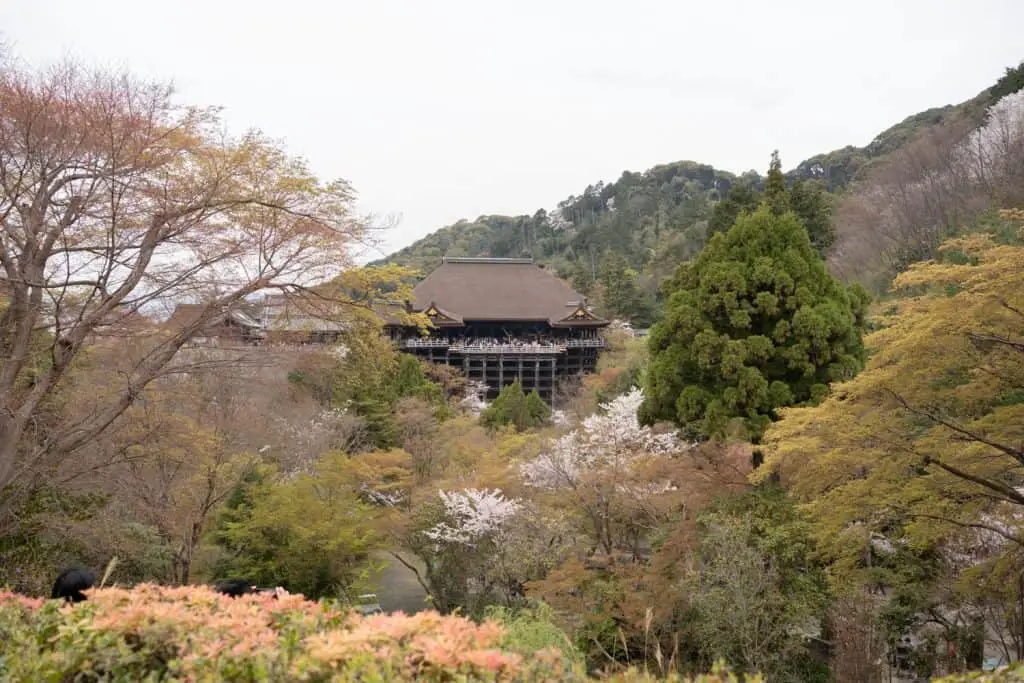
Kiyomizu-dera is a classic recommendation, and definitely one of the most popular things to do in Kyoto. I found it pretty but quite busy, so if you’re looking for quiet temples or relaxing things to do in Japan then this certainly isn’t one.

If you don’t get up to the top early enough, it’s one of the places in Japan that can get incredibly busy. That’s not fun for anyone!
Gion

Just a short walk from the temple we’ve just talked about is an area called Gion. It’s filled with ancient backstreets, kimono-clad day trippers, and an utterly wonderful vibe. It’s a great area to come to if you’re looking for that old Japan kind of atmosphere, especially if you’re looking for historical buildings and traditional tea houses.
Arashiyama

Last but by no means least is Arashiyama. If you’ve heard of this destination, you’ve heard of the bamboo forest, and perhaps the monkey park too.
Why did I travel there? For one very specific moss garden (pictured above – article coming soon!), and literally to lay down by the river. It was the epitome of everything I wanted my life in Japan to be, and it lived up to it!
This was just a very basic list, so I’ll write out a bigger one (with a load of secret locations I found) in a few months’ time. I’ve got so much to share!
Accommodation

When making your choice between Hakone vs Kyoto, accommodation is likely to be a huge factor. While you could just come to Japan and stay in one of the many business hotels, something with a little more character is way more fun.
So, what kind of accommodation can you expect with Hakone and Kyoto?
Accommodation in Hakone
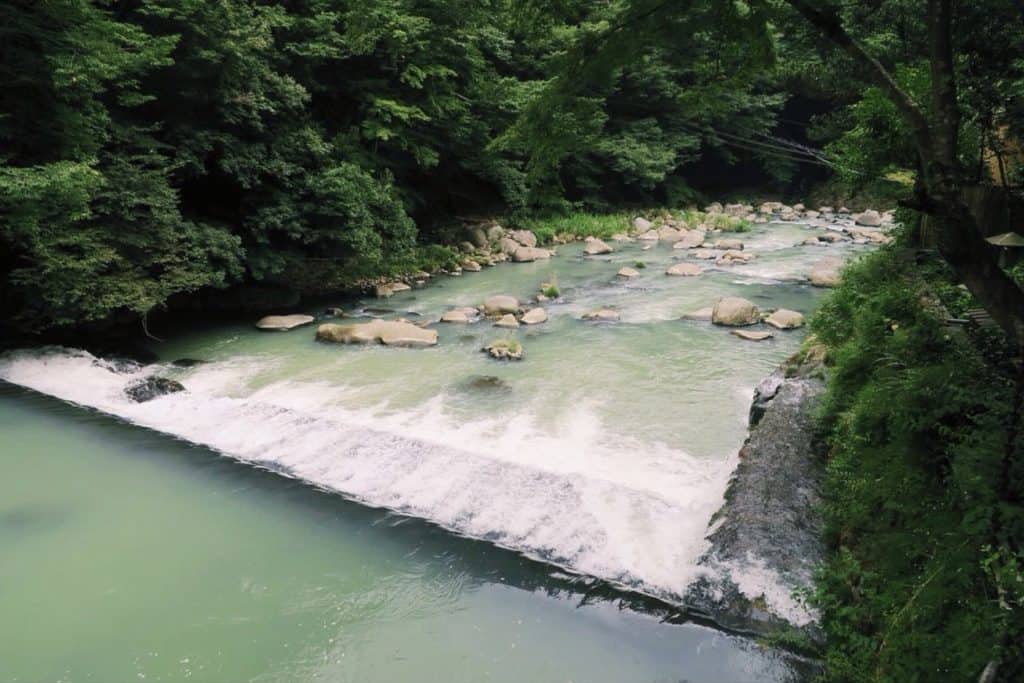
When I went to Hakone, I stayed at a ryokan called Shiunso. The view from our window is the photo above (the rooftops), and you can see part of the room in the incredibly young photo of me below!
Basically, if you’re looking for accommodation where you literally feel like you’re in the middle of nowhere, hugged by Japan’s mountains, Hakone will have more options for you. Plus, if you’re looking to have an epic onsen experience, Hakone again is the place you should choose.
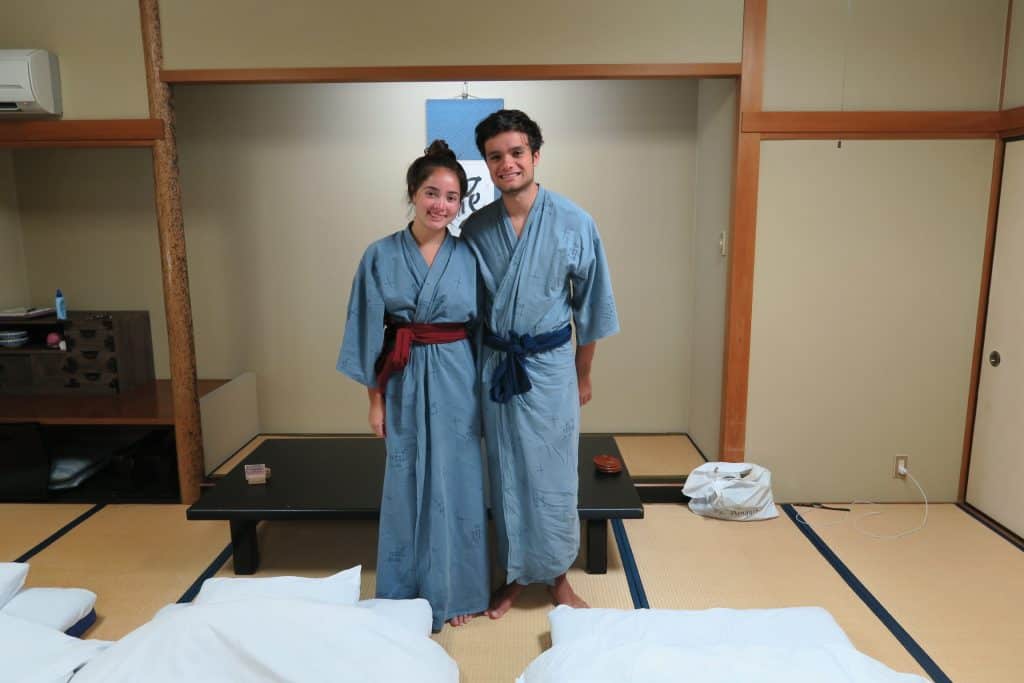
That’s not to say Kyoto doesn’t have those places and that feel, but Hakone would still be my first choice if that was the criteria.
Accommodation in Kyoto

If you’re looking for an old Japanese townhouse (Machiya) to stay in, Kyoto has loads of them. Well, less if you book in peak season, haha!
Annoyingly, I only took a picture of the outside of our accommodation in Kyoto. Take a look at this video we filmed to see the inside. It’s full of tatami floors, and even has a suit of samurai armor in it!
One thing to keep in mind is the proximity and costs of accommodation in Kyoto. Comparatively, Kyoto is more expensive than Osaka (30 minutes or so away) to stay in.
This means it’s well worth understanding your itinerary before booking your accommodation. Depending on the time of year you go, you may get a better deal and a nicer place in Osaka if you’re willing to travel a little further.
Everything is relatively central around that area so it’s not too much of an issue to stay in Osaka, though the experience I’ve had in Kyoto has 9/10 been a nicer one. Honestly, I’d pay more for the location well before the look of the place, but the choice is yours.
Though I’ve loved all the Airbnb’s I’ve stayed at in Kyoto, as I said above, we normally book through this company instead
Food
Food options in Hakone
The food photos for Hakone are, well… non-existent. I went to Hakone well before I set this site up, and clearly, I decided that taking photos of food was best left to Instagrammers, not me.
In any case, I can remember what we ate.
As we stay in a ryokan, our dinner was a Shojin Ryori. Basically, traditional Buddhist food which in this case was brought into a room for us to enjoy while sitting on the tatami flooring.
While there are a few other food options dotted around Hakone, I’d urge you to try Shojin Ryori here if you can. Especially if you’re staying at a Ryokan.
Food options in Kyoto
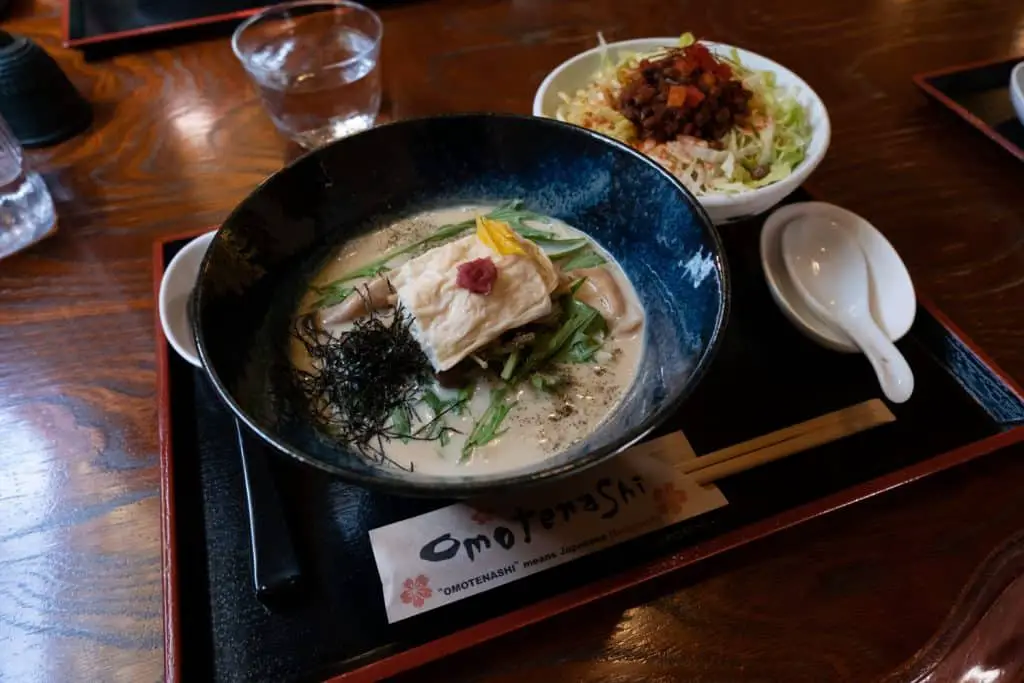
The food options in Kyoto are incredible and I have a lot of photos of it. I’ll just show you a few that Nadia took, though do check out her website if you’re interested in learning more.
Whether you’re vegan or a meat eater, love cakes, or prefer traditional cuisine, this place really has it all.

Obviously, when comparing Hakone vs Kyoto, you have to remember that Kyoto is a lot bigger and so the amount of restaurants available is probably relative to its size. That said, if there’s a certain place you want to go to, it’s worth looking up its popularity as you may have to book in advance.
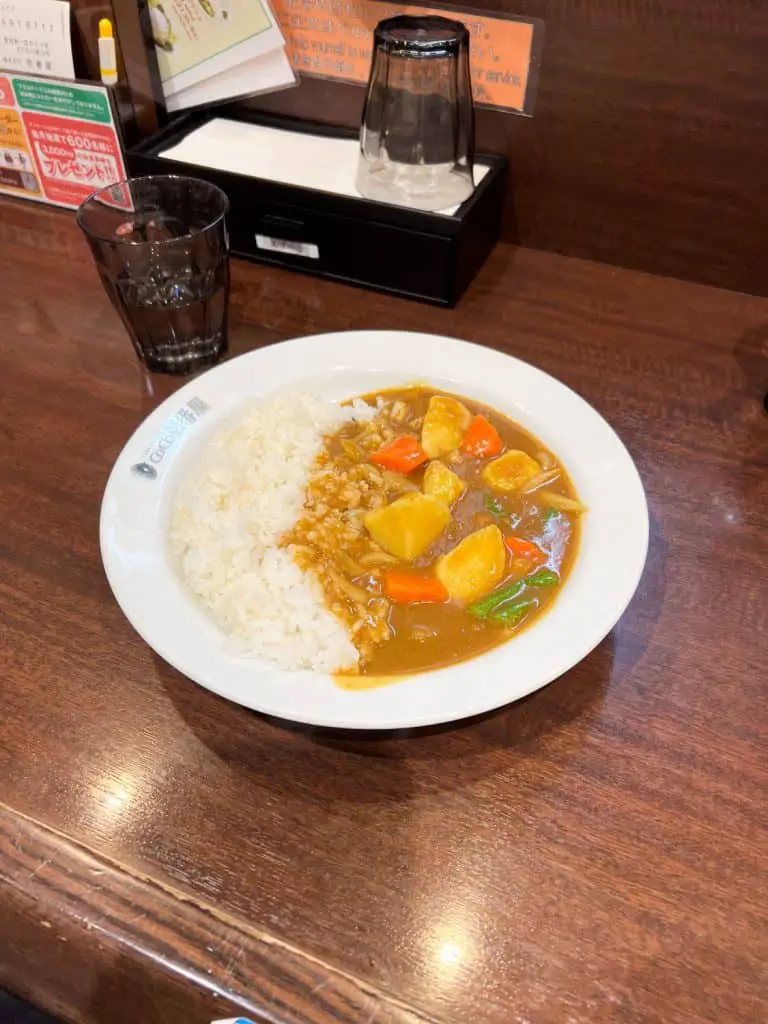

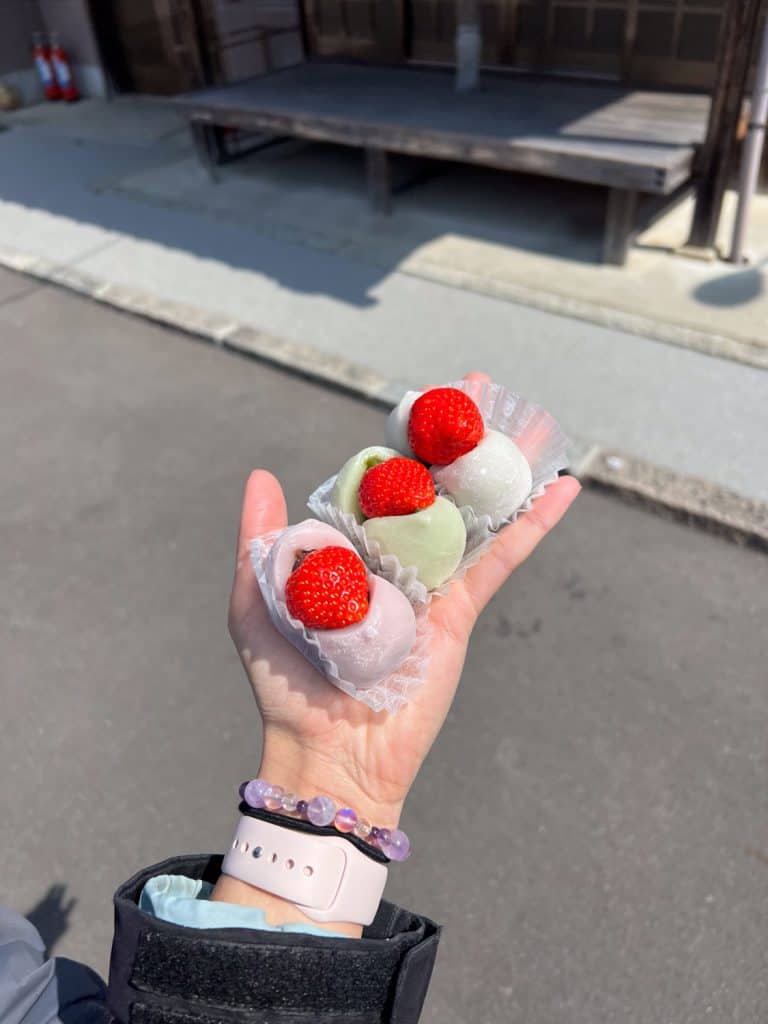
The okonomiyaki in the middle is from Gion Tanto, and absolutely worth the 2 times we tried queueing to get into it. The curry on the left was just from Cocoichibanya, but I still enjoy it! And the mochi… I mean, it’s just so damn tasty!
Shopping
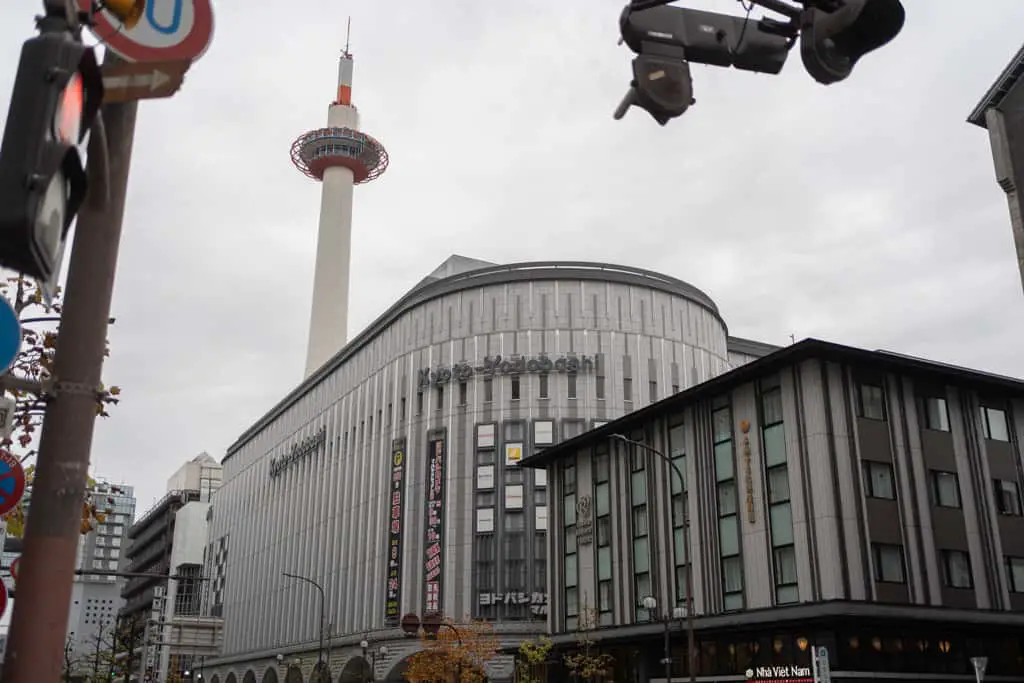
Shopping in Hakone
Hakone might not be in the same league as Kyoto in terms of the number of shops, but that doesn’t mean it has nothing to offer. Just outside Hakone-Yumoto station, you’ll find Hakone-Yumoto Shotengai, a shopping street with about 70 little shops for your to browse through.
It’s a great place to find souvenirs and doesn’t have the same intensity as some of the bigger shopping areas in Kyoto. Plus with a selection of cute cafes, it’s well worth checking out, especially with its proximity to the station.
Shopping in Kyoto
Depending on where you are, the shopping options in Kyoto can either be extensive, or minimal. Almost as soon as you step out of the station you’ll be greeted by this behemoth of a building in front of you.
This is Yodobashi camera Kyoto, and I absolutely love it! It sets the scene for the sheer amount of shops around this area, though I’d caution you to set a timer before you go in because you’ll be here for a while if you’re anything like me!
You’ve also got places like Nishiki market (incredibly busy at times) with over 100 small shops and market stalls, as well as downtown Kyoto which is perfect for souvenir and upmarket shopping.
Best time to visit
Hakone: Fall / Autumn
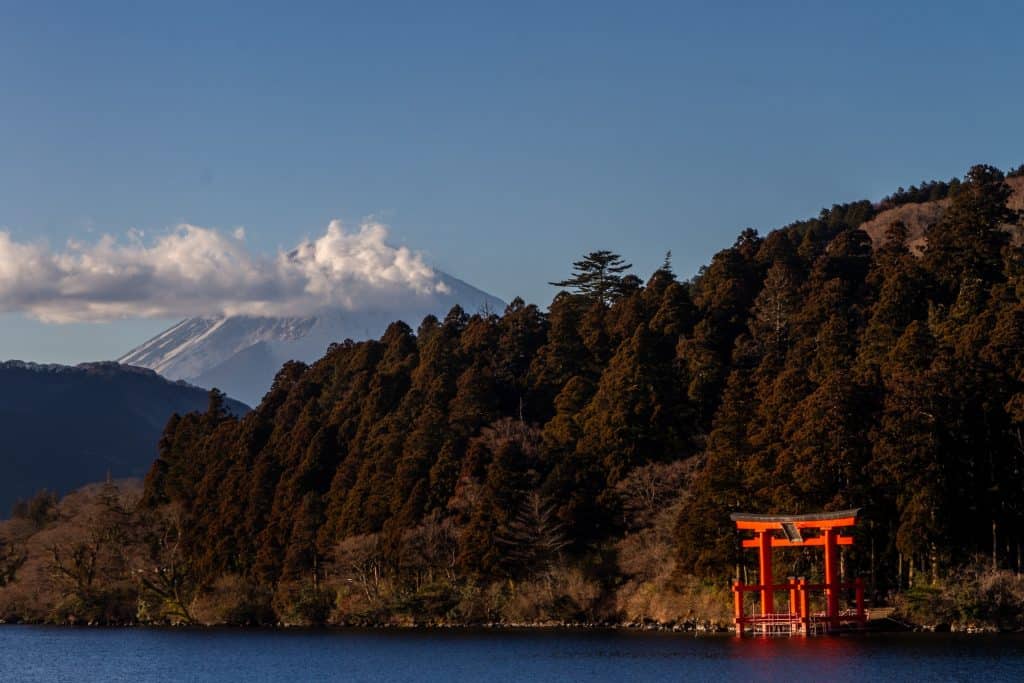
I haven’t visited Hakone in Autumn, but I have visited another mountainous region (Nikko) during autumn which has the same kind of altitude and atmosphere. While I would consider almost any time of year to be a great time to visit Hakone, this is the time I’d recommend the most.
First, and perhaps most obviously is the stunning color of the leaves. Kōyō (changing color of the leaves) only lasts a very short time (similar to the cherry blossom), but if you manage to catch it, seeing it somewhere like Hakone would be spectacular.
Another reason is that Autumn gives you the perfect evening temperatures to enjoy the onsen. Summer is HOT in Japan, Winter is flipping freezing which may put a spanner in your plans for daytime plans, and spring is… Spring is pretty great to be fair.
Anyway, the slightly cooler evenings are the perfect temperature to enjoy the one thing Hakone is so well known for, Onsen. So if you can make it happen around this time, it’s well worth it!
Kyoto: Spring
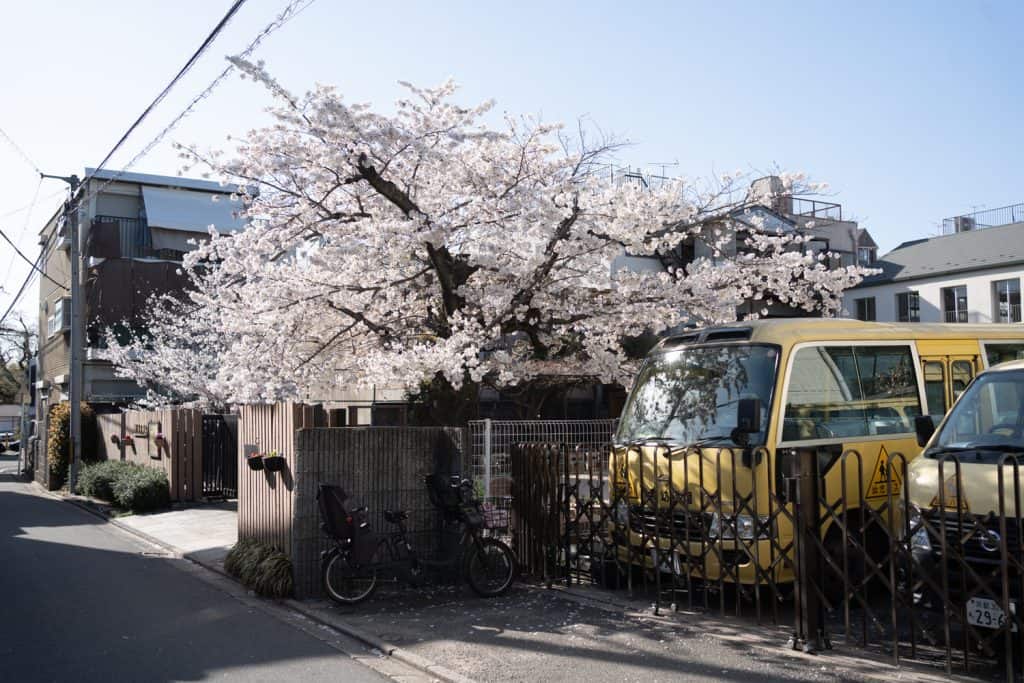
If you only visit Kyoto once, make sure you go in the spring. There really is nothing quite like wandering through the cute backstreets and happening across spectacularly placed blossom trees.
Granted, it’s a busy time of year especially in Kyoto, but you need to do it at least once.
It’s also a really nice place during most of the other seasons as well. It’s slightly cooler than places like Tokyo in the Summer, or at least it feels like it is because of the fewer amount of highrise buildings.
Budget and Expenses
How much does Hakone cost
It completely depends on where you stay and what you plan on doing, but in general, Hakone can be expensive. I think a lot of that expense comes from its location and global recognition as an onsen town.
It’s frequently recommended to most people traveling to Japan, especially if they’re visiting Tokyo. To be honest, I don’t blame people for doing so because it’s such a beautiful place.
Luckily there are other alternatives if you still want to be in close proximity but can’t stomach the high costs of a ryokan in central Hakone.
Yumoto is the gateway town to Hakone and it’s definitely a little cheaper compared to some of the more central areas. If you want to be close but can’t afford to be central, give this area some thought.
Odawara is another option and is great if you want to stay somewhere a little more urban and just visit Hakone for the day (about 30 minutes away). This is the place we got the train to from Tokyo, as it connects to Kyoto (our final destination) via Shinkansen.
Pretty handy to have somewhere so close to Hakone with such great travel links to the rest of the country!
Expect to pay around $200 for a decent Ryokan (including dinner) experience for the two of you. Depending on where in Hakone your stay and the time of year you’re booking, that price could be each or for both of you.
In terms of how much activities cost, and getting to Hakone like we discussed at the beginning, I’d recommend checking out the Hakone Freepass which bundles a lot of these things together for one price. If you’re staying for 2-3 days, it could absolutely be worth the price!
How much does Kyoto cost?
Again, it completely depends. As far as accommodation is concerned, Kyoto is far more expensive than staying in Osaka.
As I said before, I think that’s worth the extra cost, but you may want to spend your money on something else.
Eating in Kyoto is comparable to other big cities, though can be less or more depending on the places you eat. If you visit in spring you’ll find attractions will charge slightly more, and food prices will likely increase as well.
It’s just one of those things that can’t be helped and should be budgeted for accordingly.
Because Kyoto is far bigger than Hakone, you’ll find yourself spending a lot more time here. That obviously means you’ll be spending more money in total, but there are a lot of free things to do in Osaka and plenty of cheap or free things to fill your days with in Kyoto as well.
As I mentioned before, this area has lots of outdoorsy-type things to go and see, and the vast majority of them don’t cost a penny. All you’ll have to do is budget for transport and food!
Which Destination Should You Choose?
Both.
I mean, if you’ve got the time then both of these destinations will give you something different you’ll enjoy.
However, if you have neither the time nor money to do both then the decision is slightly more difficult.
If you’re hanging around Tokyo for an extended period of time, traveling to Hakone is a welcome rest from the hustle and bustle of the city. If you have the option, book near the end of your holiday before you get on the plane. An onsen is a great way to finish things off!
On the other hand, if you’ve planned to go to Osaka (hopefully not on this night bus) then you’d be silly not to incorporate Kyoto into your itinerary. You won’t have the same mountainous feel as you do in Hakone (unless you venture out of the tourist areas) but it’s an absolutely stunning prefecture and definitely lives up to the hype.
Before you go! Traveling around Japan and researching which places to go to (like this article) is a great way to make sure you get the most out of your trip! However, give me just 5 minutes to show you how (and why) traveling around Japan without a plan could be a game-changer!



